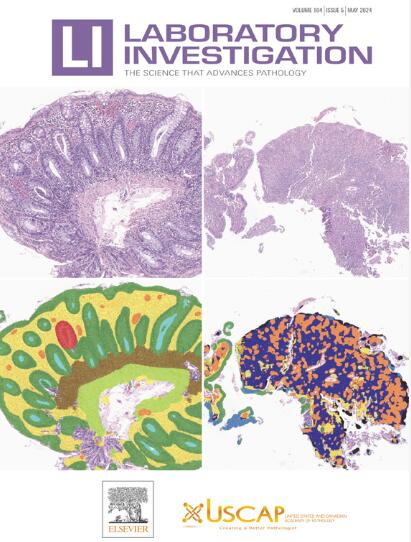Quantifying Cardiac Tissue Composition Using QuPath and Cellpose: An Accessible Approach to Postmortem Diagnosis
IF 5.1
2区 医学
Q1 MEDICINE, RESEARCH & EXPERIMENTAL
引用次数: 0
Abstract
Sudden death can be the first symptom of cardiac disease, and establishing a precise postmortem diagnosis is crucial for genetic testing and follow-up of relatives. Arrhythmogenic cardiomyopathy is a structural cardiomyopathy that can be challenging to diagnose postmortem because of differences in structural findings and propagation of the disease at the time of death. Cases can have minimal or no structural findings and later be diagnosed according to genotype, known as concealed cardiomyopathy. Postmortem diagnosis often lacks clinical information, whereas antemortem diagnosis is based on paraclinical investigations that cannot be performed after death. However, the entire substrate is available, which is unique to postmortem diagnosis and research and can provide valuable insights when adding new methods. Reactive changes in the heart, such as myocardial fibrosis and fat, are significant findings. The patterns of these changes in various diseases are not yet fully understood and may be limited by sampling material and conventional microscopic diagnostics. We demonstrate an automated pipeline in QuPath for quantifying postmortem picrosirius red cardiac tissue for collagen, residual myocardium, and adipocytes by integrating Cellpose into a versatile pipeline. This method was developed and tested using cardiac tissues from autopsied individuals. Cases diagnosed with arrhythmogenic cardiomyopathy and age-matched controls were used for validation and testing. This approach is free and easy to implement by other research groups using this paper as a template. This can potentially lead to the development of quantitative diagnostic criteria for postmortem cardiac diseases, eliminating the need to rely on diagnostic criteria from endomyocardial biopsies that are not applicable to postmortem specimens. We propose that this approach serves as a template for creating a more efficient process for evaluating postmortem cardiac measurements in an unbiased manner, particularly for rare cardiac diseases.
利用QuPath和Cellpose量化心脏组织成分:尸检诊断的便捷方法SAE.
猝死可能是心脏疾病的首发症状,而确定准确的死后诊断对于基因检测和亲属随访至关重要。心律失常性心肌病(ACM)是一种结构性心肌病,由于死亡时的结构检查结果和疾病传播情况不同,死后诊断具有挑战性。病例可能只有极少或没有结构性发现,但后来根据基因型被诊断为隐匿性心肌病。死后诊断往往缺乏临床信息,而死前诊断则基于死后无法进行的临床旁检查。然而,可以获得整个基质,这是尸检诊断和研究的独特之处,在添加新方法时可以提供有价值的见解。心肌纤维化和脂肪等心脏反应性变化是重要的发现。这些变化在各种疾病中的模式尚不完全清楚,而且可能受到取样材料和传统显微诊断的限制。我们在 QuPath 中展示了一种自动流水线,通过将 Cellpose 集成到多功能流水线中,对死后皮色红心肌组织中的胶原蛋白、残余心肌和脂肪细胞进行量化。这种方法是利用尸体解剖者的心脏组织开发和测试的。确诊为 ACM 的病例和年龄匹配的对照组被用于验证和测试。这种方法是免费的,其他研究小组可以以此为模板轻松实施。这有可能为死后心脏疾病制定定量诊断标准,从而无需依赖心内膜活检的诊断标准,因为这些标准不适用于死后标本。我们建议以这种方法为模板,创建一个更有效的流程,以公正的方式评估死后心脏测量结果,尤其是罕见的心脏疾病。
本文章由计算机程序翻译,如有差异,请以英文原文为准。
求助全文
约1分钟内获得全文
求助全文
来源期刊

Laboratory Investigation
医学-病理学
CiteScore
8.30
自引率
0.00%
发文量
125
审稿时长
2 months
期刊介绍:
Laboratory Investigation is an international journal owned by the United States and Canadian Academy of Pathology. Laboratory Investigation offers prompt publication of high-quality original research in all biomedical disciplines relating to the understanding of human disease and the application of new methods to the diagnosis of disease. Both human and experimental studies are welcome.
 求助内容:
求助内容: 应助结果提醒方式:
应助结果提醒方式:


